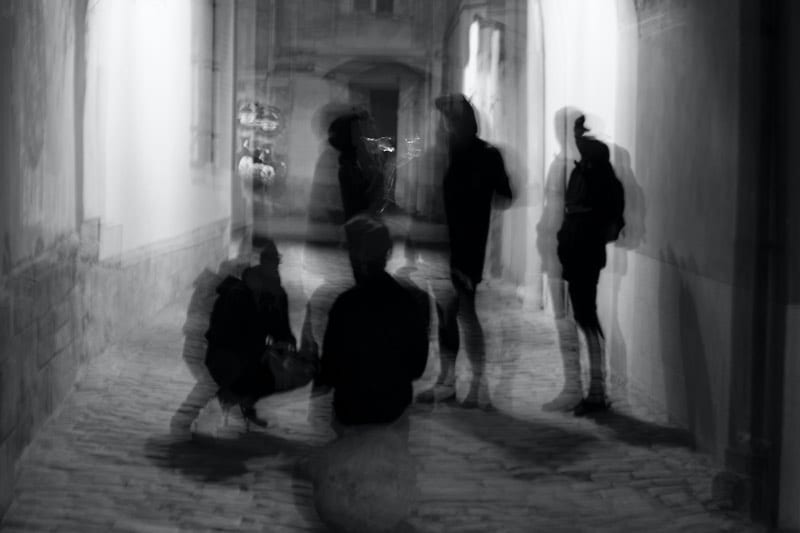“In World War One, they called it shell shock. Second time around, they called it battle fatigue. After ‘Nam, it was post-traumatic stress disorder.”
― Jan Karon, Home to Holly Springs
Shell shock, battle fatigue, post-traumatic stress disorder (PTSD). Same symptoms, different names. Throughout time, people have suffered things that affected their bodies and minds in ways that words don’t even begin to describe. First, trauma was thought to be experienced by veterans only. As time passed, people who weren’t even near war zones were found to display trauma identifiers as well. So, PTSD was thought to happen to people who experience it first-hand. However, researchers have recently found that you don’t have to go through the trauma yourself, but witnessing something horrifying can also lead you to have these symptoms.
Trauma and the after-effects of it are different in different cases. The moments that feel out-of-control or unpredictable are generally the cases that lead to PTSD. The trauma of someone who served in combat can be different from someone who was sexually assaulted. Although both situations are as likely to cause flashback symptoms, how they affect each person differs. For example, in most sexual assault cases, there is found to be a decrease in one’s perceived “sense of control.” Having control over your actions and your decisions means having an alternative choice. However, in most cases of sexual trauma, this choice is taken away from the person. Individuals lose their sense of agency and have to endure the traumatic moment without having the capability of “controlling it.”
Flashbacks are one of the most important identifiers of post-traumatic stress disorder. The common characteristic of the flashback is that it is intrusive and involuntary. It is like a memory that comes out of nowhere. There are certain cues that trigger a flashback. One sound, one twitch of an eye, one movement, one smell might be all it takes to bring you back to the traumatizing moment.
The triggers can be different for everyone. Flashbacks are similar to remembering stuff when we, for example, smell or hear something. The smell of a certain flower can take you back to the moment where you had a picnic with your family, or a particular song might take you back to the moment when you had your first dance with your partner. Flashbacks work in that matter.
In our daily lives, we stumble upon so many people, have so many memories. As a result, it becomes impossible for us to remember consciously every tiny detail of the moment. But the cues we aren’t aware of are being engraved in our subconscious mind. Those cues are considered the triggers of your flashbacks. They are different and personal for everyone. One trigger is all it takes to bring your most repulsive memory back to life. In severe cases of flashbacks, trauma survivors may experience dissociation—a feeling where you feel unattached from your surroundings, senses, and even your own body. You might feel as if you’re watching the moment from above. As you go along your treatment process, you can learn the triggers that cause your flashbacks and work through them.
What happens in our brain when we’re having a flashback? “Survival of the fittest” is the key to evolution. Our brain has plasticity, which enables it to survive and adapt. This plasticity allows our brain to adapt to different situations, whether they involve rainbows and unicorns or war and assault.
Two vital parts in our brain play a big role in PTSD, the amygdala and the hippocampus. The amygdala is the brain region involved in identifying threats and danger. The sensitivity of the amygdala makes it over-active to the cues of trauma. The hippocampus, on the other hand, is mostly objective. This region of the brain is not nearly as interested in emotion-related stimuli. It is mostly responsible for the documentation of what happened. Researchers have found that there is a decreased hippocampal volume in PTSD cases. This means that the memory side of the brain wasn’t as active as the threat-identifier side.
One common explanation for this is the fight-or-flight mechanism of our body. When we’re aroused in such ways that we feel scared or anxious, our body comes up with a plan to alleviate this feeling. Our blood is diverted to our legs and arms so we can run or fight harder, our pupils dilate to get better light, our heart rate accelerates, and our breathing gets quicker to receive more oxygen. In that situation, our mind and body work as one. While the amygdala becomes the first priority to detect the threat, the hippocampus and building up meaningful memories take second place. After all, we cannot build up memories unless we survive.
Flashbacks cause you to re-experience the traumatic event. Make you feel like you’re in that moment even though you are not. This feeling can lead to the activation of the fight-or-flight mechanism again. These flashbacks can be accompanied by increased heart rate, sweating, fear, and in severe cases, panic attacks.
If you know or if you are someone who suffers from post-traumatic stress disorder and flashbacks, the one thing I want you to remember is that you are not a victim. You have a tough but treatable condition. The aftermath of the event might still be on you, making you remember that you were in a situation where all your control and sense of trust were shattered. This doesn’t mean you cannot get better. Give yourself, your mind, and your body the time to heal and look for professional support. Whether you’re a soldier who fought for your country, or a sexual assault survivor, or someone who lived through a natural disaster, or someone who has endured things that most people can’t imagine, remember that you are not alone. You are a survivor. So, go and seek help. The world still needs you.
If you or someone you know experiences mental health issues, it is important to seek help from a qualified professional. Our Resource Specialist can help you find expert mental health resources to recover in your community. Contact us now for more information on this free service to our users.
About the Author: Asude Ucal is a third-year psychology student and a freelance writer. She writes on her personal blog, https://medium.com/@asudeucal, covering mental health, psychology, and neuroscience, where she makes use of her education. In her free time, she likes to watch Great British Bake Off and hang out with her cat.
References
- Brewin, C. R. (2015). Re-experiencing traumatic events in PTSD: new avenues in research on intrusive memories and flashbacks. European Journal of Psychotraumatology, 6(1), 27180. doi:10.3402/ejpt.v6.27180
- Chi, T. (2019, July 04). What Happens in Your Brain During a PTSD Flashback? Talkspace. https://www.talkspace.com/blog/happens-brain-ptsd-flashback-2/
- Frazier, P., Steward, J., & Mortensen, H. (2004). Perceived Control and Adjustment to Trauma: A Comparison Across Events. Journal of Social and Clinical Psychology, 23(3), 303–324. doi:10.1521/jscp.23.3.303.35452
- Shin, L. M., Rauch, S. L., & Pitman, R. K. (2006). Amygdala, Medial Prefrontal Cortex, and Hippocampal Function in PTSD. Annals of the New York Academy of Sciences, 1071(1), 67–79. doi:10.1196/annals.1364.007
Photo by Olesya Yemets on Unsplash
The opinions and views expressed in any guest blog post do not necessarily reflect those of www.rtor.org or its sponsor, Laurel House, Inc. The author and www.rtor.org have no affiliations with any products or services mentioned in the article or linked to therein. Guest Authors may have affiliations to products mentioned or linked to in their author bios only.
Recommended for You
- The Intersection of LGBTQ+ Identity and Mental Health - December 9, 2024
- What Are the Signs of Self-Harm? A Comprehensive Guide - December 5, 2024
- People-Pleasing: Definition, Examples, and What You Can Do Instead - December 2, 2024





